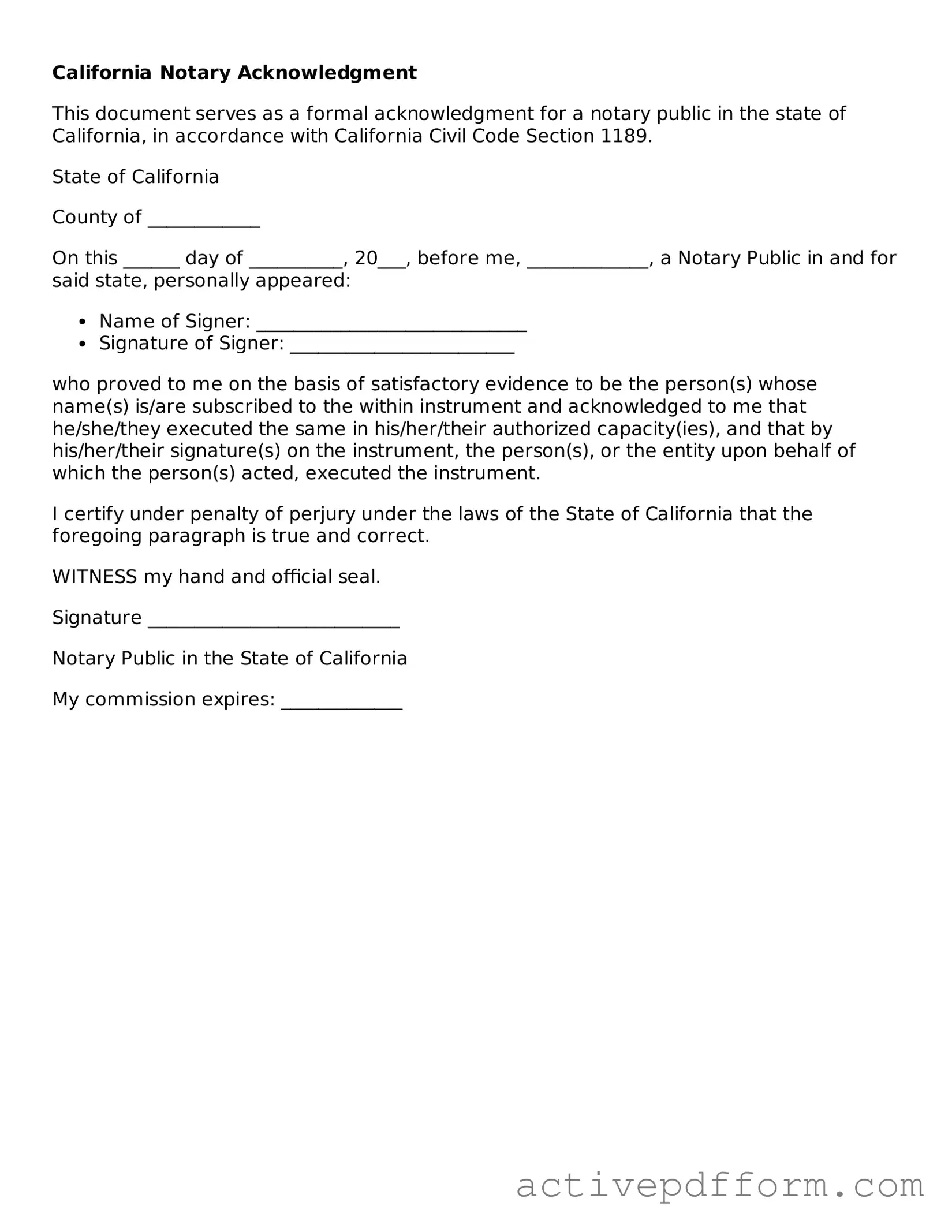What is a California Notary Acknowledgement form?
The California Notary Acknowledgement form is a legal document used to verify the identity of individuals signing a document. It confirms that the signer appeared before a notary public and acknowledged their signature. This form is essential for ensuring the authenticity of documents used in various legal processes.
When is a Notary Acknowledgement form required?
A Notary Acknowledgement form is typically required when a document needs to be recorded or filed with a government agency. Common examples include property deeds, powers of attorney, and certain contracts. It provides assurance that the signer’s identity has been verified and that they signed the document willingly.
Who can perform a notarial acknowledgment in California?
Only a commissioned notary public can perform a notarial acknowledgment in California. Notaries are trained and authorized by the state to verify identities, administer oaths, and witness signatures. It is important to choose a notary who is active and in good standing with the state.
What information is included in a Notary Acknowledgement form?
The Notary Acknowledgement form includes several key pieces of information: the name of the signer, the date of the acknowledgment, the name of the notary, and the notary's official seal. It also contains a statement affirming that the signer appeared before the notary and acknowledged signing the document.
Can a Notary Acknowledgement be performed remotely in California?
As of 2023, California allows remote online notarization under specific conditions. However, the notary must follow the state's regulations regarding remote notarization. This process typically involves using audio-visual technology to verify the signer’s identity and witness the signing of the document.
What happens if a Notary Acknowledgement is not properly completed?
If a Notary Acknowledgement is not properly completed, the document may be deemed invalid. This can lead to complications in legal proceedings, such as challenges to the authenticity of the document. It is crucial to ensure that all required information is accurate and that the notary has properly executed the acknowledgment.
How long is a Notary Acknowledgement valid in California?
A Notary Acknowledgement does not have an expiration date; however, the document it accompanies may have its own validity period. It is advisable to check the requirements for the specific type of document being notarized to ensure compliance with any relevant deadlines.
